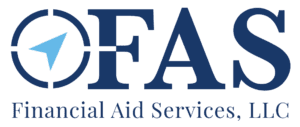The Looming Enrollment Cliff
By: Robert Heil, CEO
You are likely aware of the impending enrollment cliff expected to hit higher education soon. The cliff is a demographic trend resulting from a decline in the number of high school graduates in the early 2000s, Now that those students are reaching college-age, the metrics are clear – many college seats available, not nearly enough students to fill them all.
Preparing for the looming cliff is a central topic in higher education meetings, conferences, and webinars. Too often, these meetings revolve around the conventional go-to topics: diversifying revenue streams, exploring non-traditional and graduate programs, targeting specific markets, increasing financial aid, improving recruitment strategies, and boosting retention rates. While these aspects are undoubtedly important, they have always been on the radar. These initiatives matter but haven’t these always been priorities? The question now is: What is it about the impending cliff that makes these new?
Campuses cannot simply market their way around the cliff. A comprehensive solution is required, which means programs and operational excellence are equally important. As I meet with college and university Presidents and their Boards, leaders in Washington DC, and in the EdTech sector, I noticed 4 factors that warrant more attention when preparing for the enrollment cliff.
College-Going Rates in Your Market is a Metric You Need to Know:
The college-going rate is the number of higher school graduates who enroll in college. It is critical that you know these rates throughout your markets. Everyone is aware of the national demographics. Not as many campuses are paying close attention to the college-going rates in their primary and secondary markets. Are those rates increasing or decreasing in your markets? What are the projections in the coming years? These rates will either increase or mitigate the severity of the cliff you experience.
Historically, higher education weathered these demographic storms by relying on an increase in the college-going rate. What makes this particular cliff so concerning is that we may not have the luxury of relying on higher college-going rates. The cliff reality could be made even steeper by a segment of students and families that are giving up or doubting the ROI of higher education. Career opportunities are drawing students into the world of work directly out of higher school.
Alternative online credentials are luring others away from traditional degree programs. COVID had a short and long-term impact on the learning experience. Unfortunately, more students and families now question the value of college and are exploring new routes to learning and career outcomes. This value question was under scrutiny already due to rising costs in tuition and student loan debt; however, it appears to have gained momentum post-COVID and could impact college-going rates. Keep reading. You can do something about this.
Pathways Need to Be Central to Your Strategy:
Creating opportunities for high school students to experience your campus earlier will create an advantage. More dual enrollment programs, weekend coding boot camps, literature events, athletic camps, gaming contests, performing arts programs, mock trial coaching events, and shark-tank business projects are just a few examples of where you might invest. Align those immersive experiences with academic or extra-curricular programs you are confident will drive growth for your campus.
Do not overlook transfer agreements with community colleges in your primary and secondary markets either. The development of pathway programs benefits everyone. You drive more demand while influencing the college-going rates in your primary and secondary markets.
Pathways are important priorities for legislatures at the state and federal levels; you may discover funding sources exist, too. You are not going to market your way around the cliff with simply more direct marketing and social media strategies. Pathway programs are key to the solution and benefit everyone.
You Will Lose Pricing Power:
NACUBO recently released their Tuition Discounting Study. The average institutional tuition discounting rate increased to a record 56.2% for first-time undergraduates. These rates already raise questions about how sustainable these discount rates are for most institutions. Unfortunately, the impending cliff will only add significant downward pressure on tuition pricing. While this may signal good news for students and families, it means noticeably less tuition revenue for many colleges and universities, making many campuses particularly vulnerable.
To combat this, make sure you are maximizing your financial aid strategy and operations. It is not just your leveraging strategy, but your financial aid operations and processes too. How timely are your award offers? What are your turnaround times on the key steps of the financial aid process? Wait time? Are you staffed appropriately? Does your process create a seamless and convenient experience for students and their families? When considering financial aid, it is not just about the money. A great experience speaks volumes about the value of your campus. No amount of marketing will offset a poor process or experience.
What Happens When the Enrollment Cliff Meets Higher Ed’s Staffing Crisis?
While COVID accelerated staff vacancies and hiring challenges, the root causes existed pre-pandemic. Today’s staff vacancies and hiring challenges show no signs of letting up anytime soon, pushing many campuses to re-imagine their operating models. This is particularly important for financial aid offices that influence the student experience and are on the front lines of combating the impact of the enrollment cliff. A 2022 survey conducted by The Chronicle and P3.EDU indicated 71% of campuses are outsourcing more of their operations to strategic partners.
Our most recent eCity and FAS (Financial Aid Services) industry survey mirrored equivalent results when asked about financial aid operations. The primary contributing factor is to create a model where the strategic partner can do what they do best and free up the financial aid staff to do what they do best. That is a model that benefits both the students and your campus. Staff retention is important to this conversation, too. If you want to retain your students- retain your staff. When you do lose staff members, rely on interim staffing to stem the tide until you can backfill those positions. This limits operational disruption and protects your compliance, enrollment goals, and student experience.
Challenges Deserve Solutions:
The enrollment cliff presents a significant challenge for colleges and universities, but it is not insurmountable. Our team believes challenges deserve solutions. It is a guiding principle at FAS. The good news? These challenges have solutions. They come from creating new pathways, empowering your existing team, and applying new operating models and partnerships alongside enrollment management strategies. Combined, these create a framework for a comprehensive solution that benefits students and your campus. The right solution always benefits both.
Want to learn more about what FAS can do for your institution? Reach out here to start a conversation and learn more about our services. You can watch our service videos or reach out for a 20-minute quick consultation.



